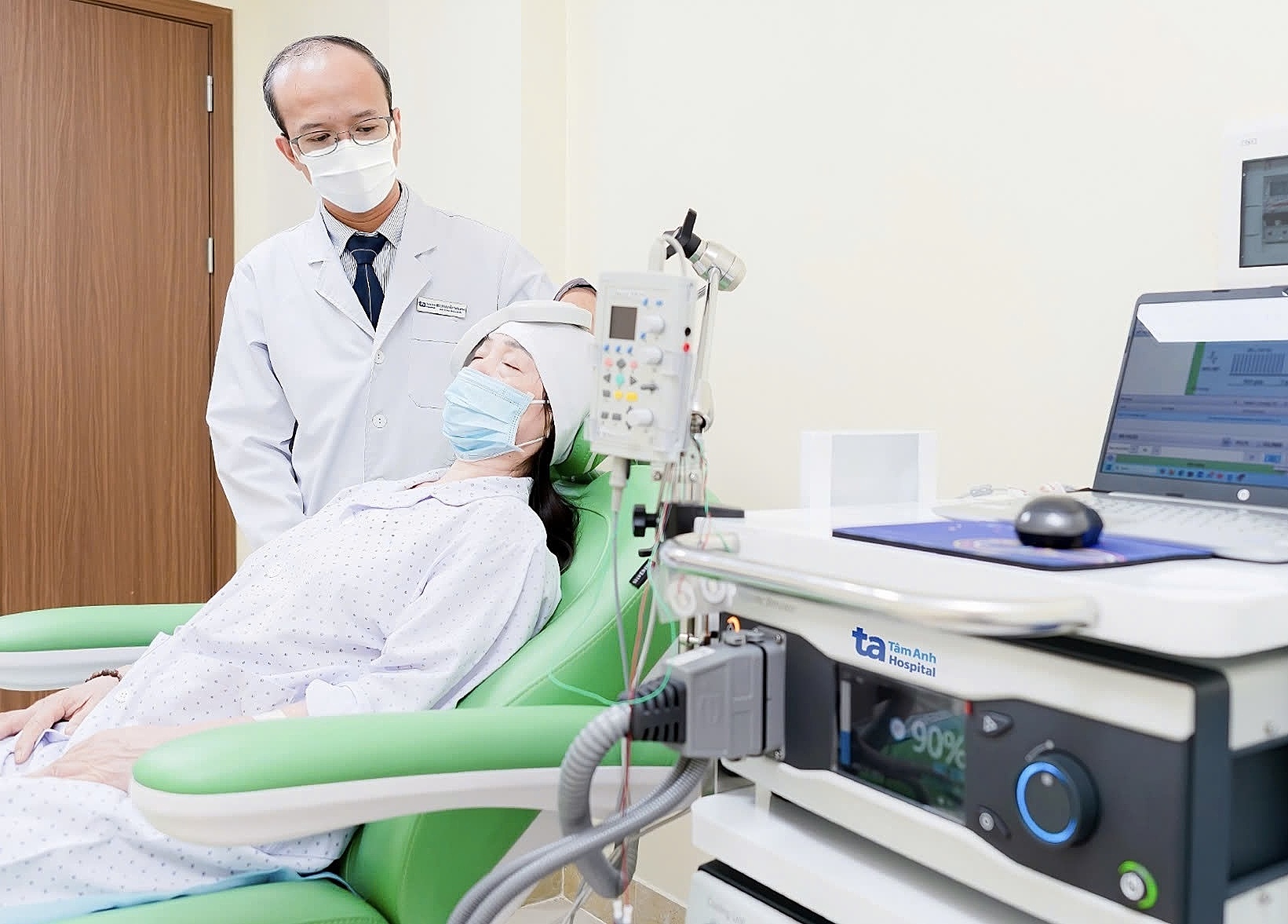Dr. Nguyen Tuan Anh of the Neuroscience Center at Tam Anh General Hospital in Ho Chi Minh City stated that this therapy is prescribed in conjunction with physical therapy, speech therapy, and a proper diet for stroke patients. This non-invasive technique uses repetitive electromagnetic pulses to stimulate damaged brain areas or those related to the function needing recovery. It enhances nerve signals, promotes neural reorganization, and restores functions affected by stroke, such as motor skills, language, and cognition.
According to Dr. Tuan Anh, after a stroke, patients often experience an imbalance in activity between the two brain hemispheres. The healthy hemisphere tends to be overactive, while the damaged one weakens. Transcranial magnetic stimulation can suppress the overactivity in the healthy hemisphere while activating the cortex around the damaged area, facilitating brain reorganization and the formation of new neural networks.
This method can promote the release of essential neurotrophic factors, helping brain cells develop new branches. This improves hand dexterity, walking ability, balance, supports language recovery, and reduces swallowing disorders. Transcranial magnetic stimulation also positively impacts psychological control, prevents dementia, and stabilizes emotions after a stroke.
 |
Dr. Tuan Anh performs transcranial magnetic stimulation on a patient. Photo: Tam Anh General Hospital |
Dr. Tuan Anh performs transcranial magnetic stimulation on a patient. Photo: Tam Anh General Hospital
According to Dr. Tuan Anh, transcranial magnetic stimulation is most effective when applied within the first 6 months after a stroke, a period of strong brain regeneration potential. Based on the extent of damage and individual recovery goals, doctors develop personalized treatment plans, precisely targeting the brain area, and adjusting frequency and duration.
During the procedure, the patient sits or lies down relaxed. A magnetic coil is placed on their head, emitting electromagnetic pulses that penetrate the skull and stimulate the targeted brain region. Each session lasts 20-30 minutes. Afterwards, patients can resume normal activities. Following the initial treatment, patients may receive further sessions to maintain results and prevent functional decline.
"This technique is safe, doesn't cause structural brain damage, doesn't affect memory, and is suitable for older adults or those with chronic conditions," Dr. Tuan Anh explained, adding that the most common side effects are mild headaches or a temporary tingling sensation on the scalp, which usually resolve within a few hours. This method has virtually no absolute contraindications but requires caution for patients with electronic devices such as deep brain stimulators or pacemakers. To ensure effectiveness and safety, patients should consult a neurology specialist with comprehensive diagnostic equipment and a team of highly trained doctors.
Phuong Thy
| Readers can submit questions about neurological diseases here for doctors to answer. |












